To
ward off the extraordinary perils to which mankind is
prone-maybe the visitations from the demons, maybe from the
human malefactors-and to preserve the socio-ethical order, Lord
Visnu whose duty it is to preserve this world, often incarnates
himself Though such incarnarnations are popularly considered to be
ten, there is no limit to their number. Nor are there any
restrictions regarding the time and place of their appearance.
Whenever Dharma declines and Adharma prospers He bodies Himself
forth to restore the balance in the world.
| Matsya |
|
Kurm |
|
Varaha |
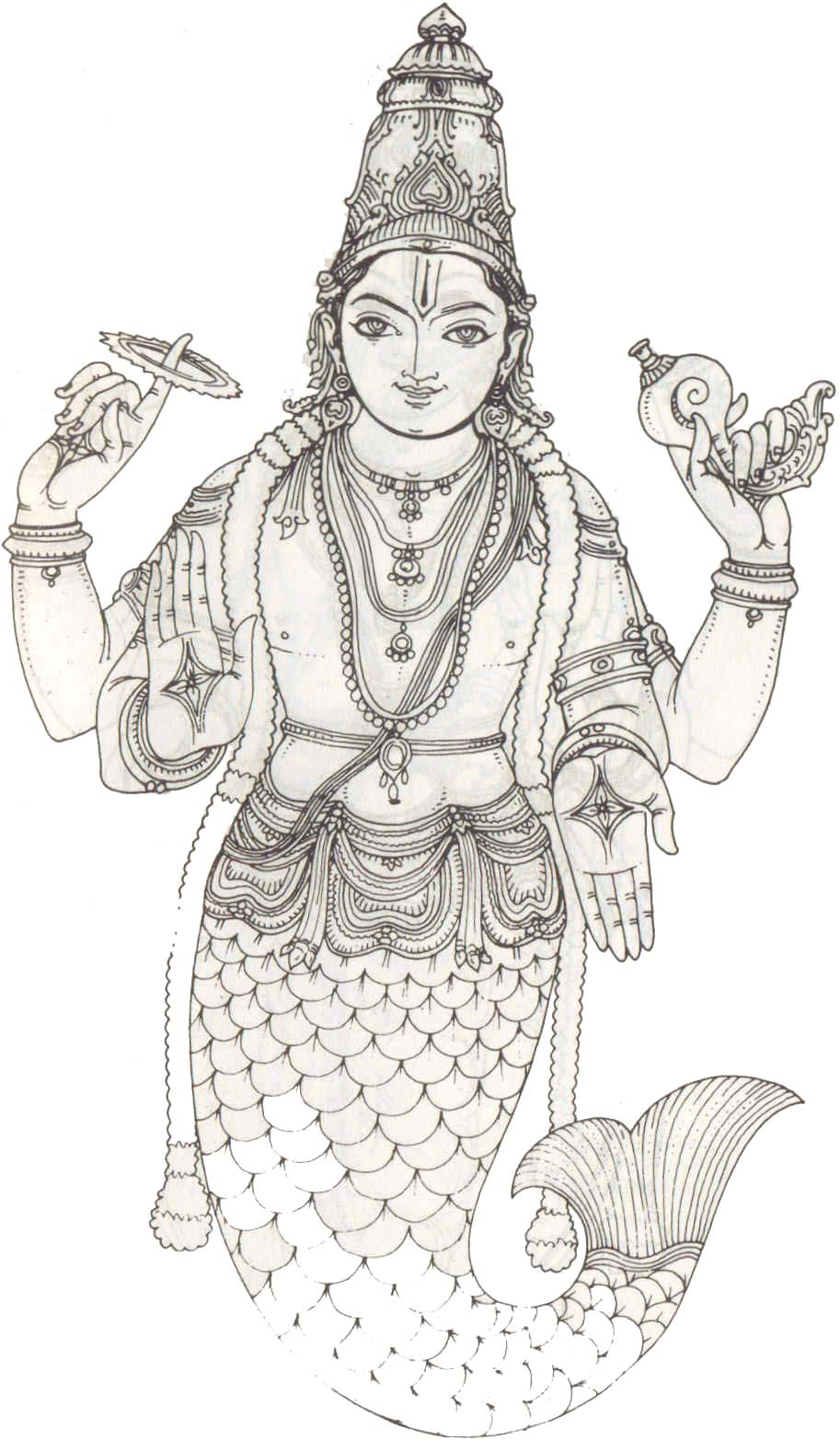 |
|
 |
|
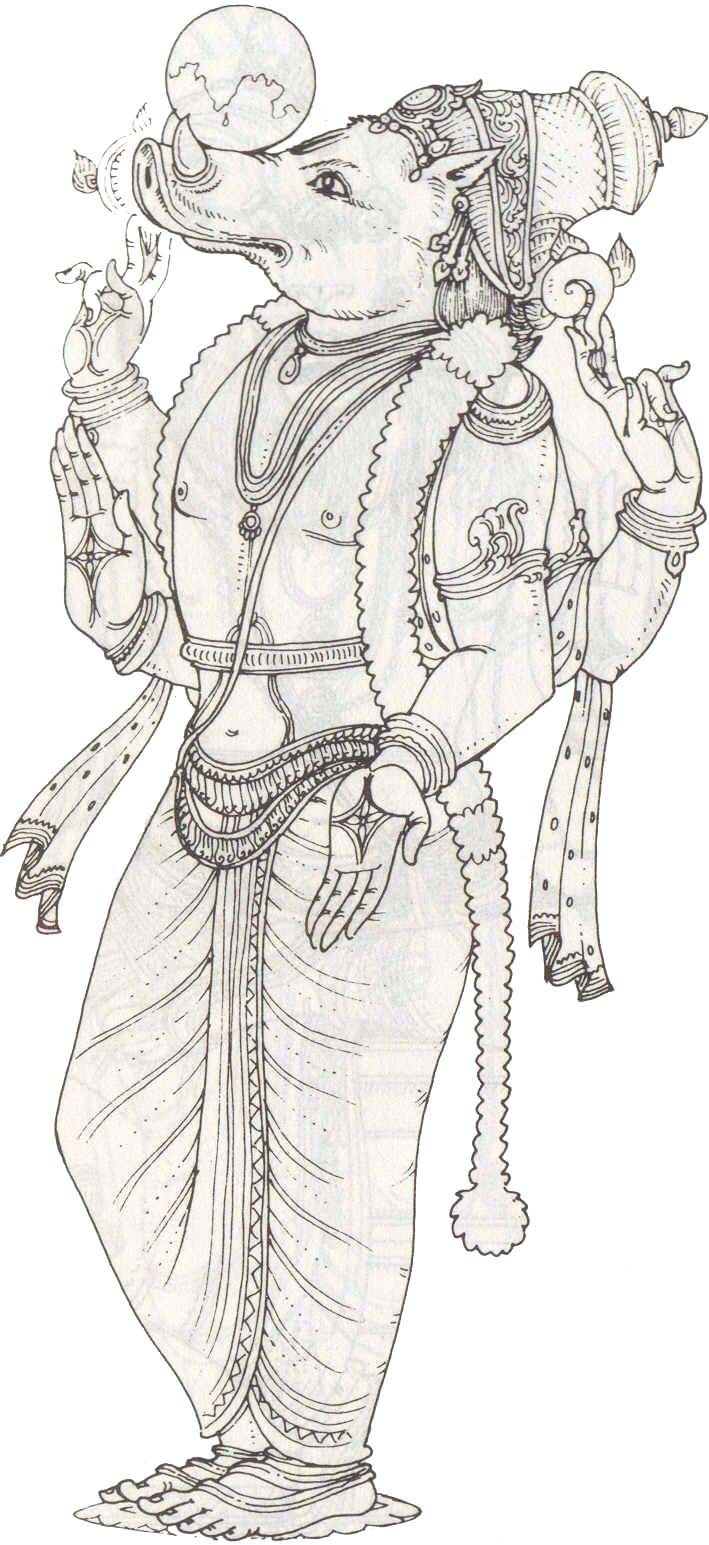 |
| In the Matsyavatara (Fish-incarnation), the Lord is said to have
saved Manu (the progenitor of mankind) and the Saptarsis (the
seven sages, mind-born sons of Brahma) along with their wives
during the deluge. The world was repopulated through them later
on. |
|
Lord Visnu incarnated himself as the Kurma (the Tortoise) in
order to support the mount Mandara which started sinking during
the churning of the ocean (Samudramathana). The gods and the
demons had jointly undertaken this adventure to get Amrta
(nectar) from the ocean. |
|
Next in the series is the Varahavatara (Boar-incarnation) in
which the Lord killed the demon Hiranyaksa and lifted the earth
out of the flood waters in which it had been submerged. This may
be a symbolic representation of the extrication of the world
from the deluge of sin by the power of the Supreme Being. |
| |
|
|
|
|
| Narasimha |
|
Vamana |
|
Parashurama |
 |
|
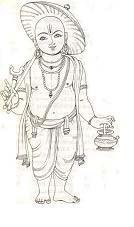 |
|
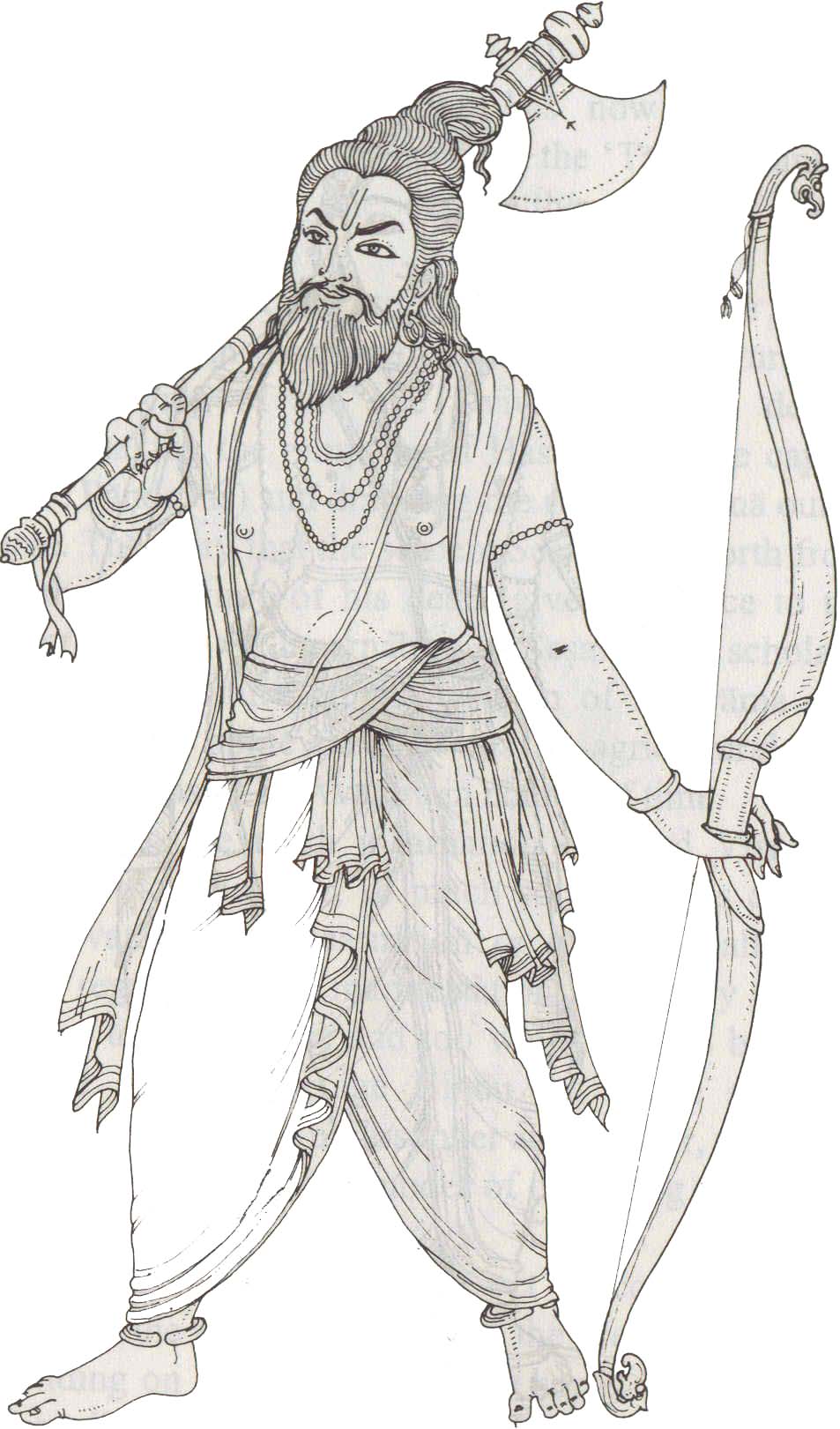 |
| When Prahlada, the great devotee of Visnu was being severely
tortured by his father, the demon Hiranyakasipu, (who was a
non-believer in the existence of an omnipresent and omnipotent
God), Narasimha (Man-lion) appeared, emerging out of the pillar
shown by him and killed him. Being a combination of man (the
best of higher creatures) and lion (the best of lower creatures)
Narasimha represents the best of creation. Incidentally this
also proves the omnipresence of God.
Narasimha is especially the embodiment of valour which is a
divine attribute and hence worshipped by rulers and warriors.
His Mantra is said to be very powerful, capable of destroying
enemies and exorcising evil. |
|
When Bali the grandson of Prahlada conquered the three worlds,
Indra was deprived of his heavenly kingdom. At the request of
Aditi, the mother of Indra, Lord Vigm incarnated as Vamana (the
Dwarf), a young Brahmana boy, and approached Bali who was known
for his munificence, for a gift of land that could be covered by
three steps. With the first and the second he covered the earth
and heaven, and with the third, he pushed down Bali to the
netherworld. Hence he is also known as Trivikrama, one who
encompassed the world with three big steps. |
|
Parasurama (Rama with the battle-axe) is the sixth Avatara. Born
as the son of the sage-couple, Jamadagni and Renuka, he
exterminated the tyrannical among the Ksattriyas led by
Kartavirya, who were oppressing the people. Whether this story
has any historical basis and represents the struggle for
supremacy between the Brahmanas and Ksattriyas, it is difficult
to say.
SrI Rama, the next incarnation, met Parasurama and absorbed his
power into himself. Hence the latter is sometimes considered as
avesavatara, an incarnation by the temporary possession of
Visnu's powers. |
| |
|
|
|
|
| Rama |
|
Krishna & Balarama |
|
Buddha |
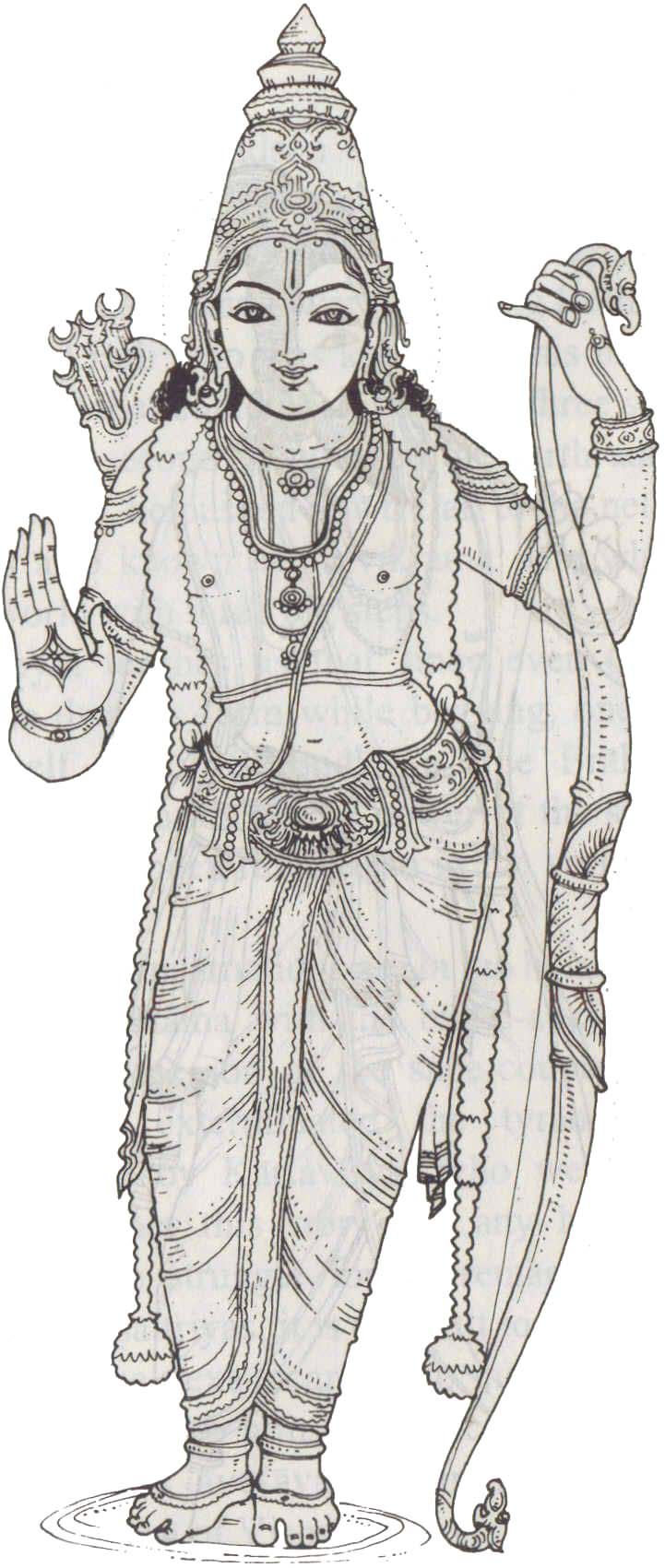 |
|
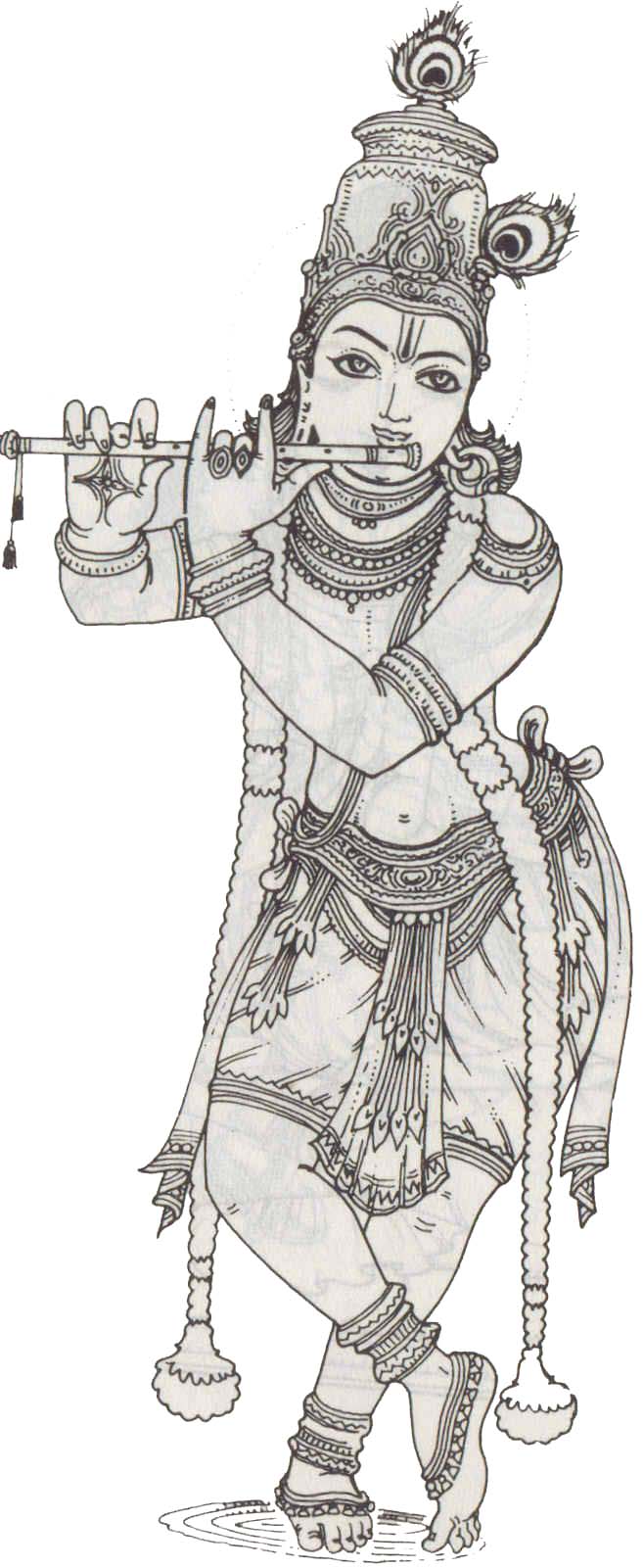 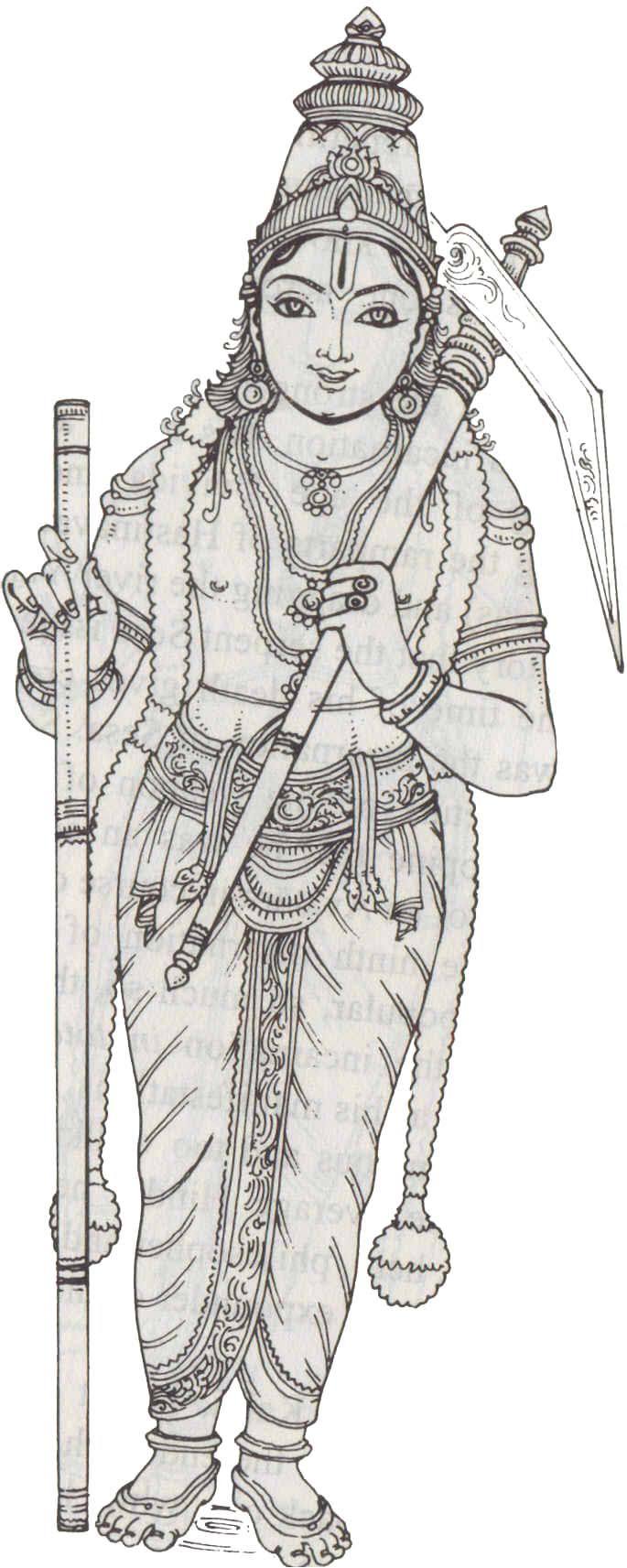 |
|
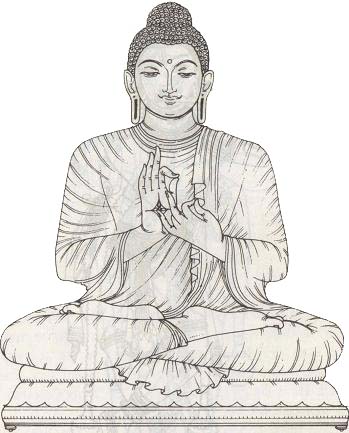 |
Sri Rama, one of the two most popular incarnations of the Lord
Visnu, comes next in the series. His story is too well-known to
need any repetition. He typifies the ideal man. His story, the
Ramayana has now become an immortal epic. His name is known as
the 'Taraka-mantra,' the Mantra that takes one across the ocean
of transmigration.
|
|
|
|
|
| |
|
|
|
|
| Kalki |
|
Nara Narayana |
|
|
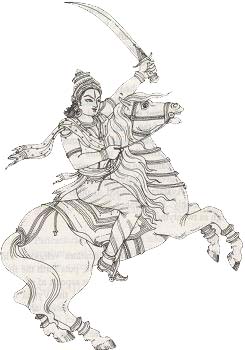 |
|
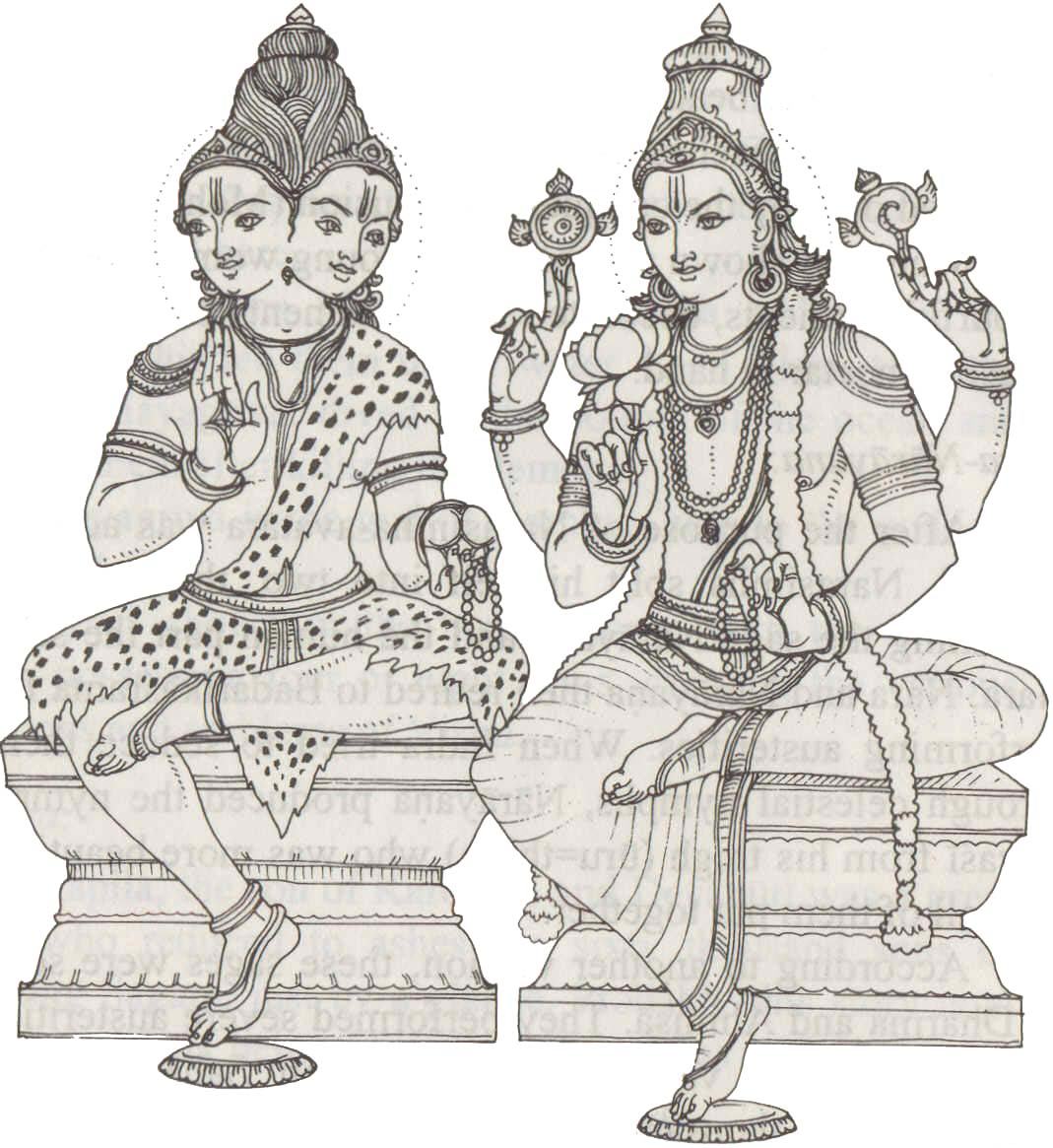 |
|
|
| |
|
|
|
|
This list of the ten Avataras of Lord Visnu is by no means the
standard one accepted by all. Taking SrI Krisna as Visnu
Himself, he is not included in some lists. His place is taken
over by Buddha. In some other lists, Buddha replaces Balarama.
Ichnographically speaking, Buddha seems to have disappeared from
such lists only after the 15th century.
Strangely enough, the purpose of the Buddha-incarnation was to
mislead men of low birth and genius, who had become too
proficient in the sacred lore and were a threat to the supermacy
of the gods! This looks more like a joke than a serious
proposition. It is obvious that the Hindus sealed the fate of
Buddhism in this country by absorbing Buddha into the pantheon
of the Avataras.
Harhsa, Satvata, Yajna, Dattatreya, Vedavyasa are some of the
Avataras included in other lists, keeping the total as ten only.
The number, however, rises sometimes to as high as twenty three.
CATURVYUHAS
Bhagavata or the Pancaratra religion, which preaches the cult of
Visnu-Narayana, puts forth the theory that the Supreme Lord
Visnu has four aspects of manifestation: (a) the Para or the
supreme; (b) the Vyuha or the emanation; (c) the Vibhava or the
incarnation and (d) the Arca or icon.
Para is the Supreme as He is, in all His glory. Vibhava
represents the incarnations already dealt with. Arca is the
descent of the Lord into the icon ceremonially installed and
worshipped in the temples.
The Vyfihas or the emanations are four in number. Hence the term
caturvyuhas, also called caturmurtis. They are: Vasudeva,
Sankarsana, Pradyumna and Aniruddha. According to Vaisnava
mythologies, while SrI Krisna is Vasudeva; his brother Balarama
is Sankarsana. Pradyumna and Aniruddha are Krisna's son and
grandson respectively. Historically speaking, it is possible
that these Yadava heroes were, in course of time, apotheosised
into these Vyuhas. Symbologically, Vasudeva represents Citta
(mind-stuff), whereas Sankarsana stands for Ahankara (egoity),
Pradyumna for Buddhi (intellect) and Aniruddha for Manas (mind).
They represent the cosmic psychological evolution.
Later on, these Vyuhas were increased to as many as twenty-four.
Iconographically, all these Vyuhas are identical in appearance
except for the arrangement of the four emblems-Sankha, Cakra,
Gada and Padma.
The Pancaratra theology often adds another aspect of the
manifestations, viz., the Antaryamin (the indweller), which
obviously, cannot be represented through icons.
|

